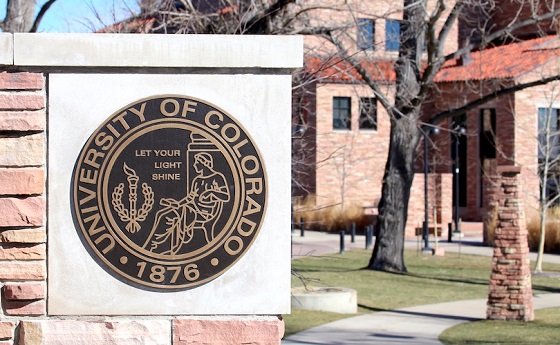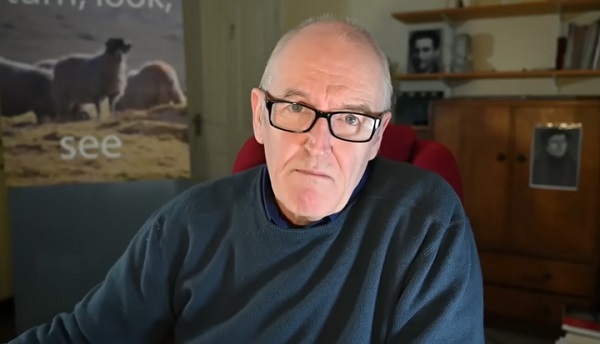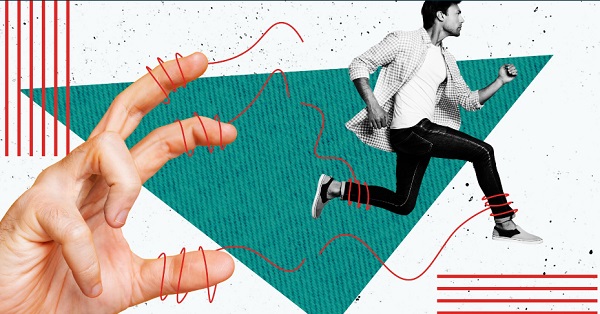COVID-19
Undue Censorship Still Skews COVID Treatments

From the Frontier Centre for Public Policy
By Lee Harding
The censorship and institutional capture evident in the pandemic should be an ongoing concern for policy-makers, scientists, and the medical field. Someone who encountered this first-hand was clinical trials researcher Sabine Hazan, who testified to the National Citizens Inquiry on COVID-19.
Hazan, the CEO and principal investigator at Venture Clinical Trials is also the founder and CEO of Progena Biome, a genetic sequencing lab. Starting in 2020, she subjected stool samples of COVID-19 patients’ to next-generation sequencing (NGS) of the entire genome of the virus.
It wasn’t long before the tests, which were $3,000 each, showed the virus mutating into four different spike proteins. Patients had anywhere from one to all of them.
“‘How is the vaccine going to work if the spike protein itself is mutating into multiple combinations?’” she asked herself.
“Vaccinating against viruses is not a really a good idea because unfortunately, viruses mutate more than bacteria.”
Hazan was curious about three cases where the virus had completely disappeared by day five. Two of these patients said they had been taking hydroxychloroquine and azithromycin.
On April 2, 2020, Hazan submitted a protocol to treat COVID-19 consisting of hydroxychloroquine, azithromycin, vitamins C, D, and zinc. The Food and Drug Administration (FDA) approved a request to do clinical trials within 24 hours, yet Facebook, Twitter, and Instagram blocked her advertisements for patients.
The few patients Hazan could recruit faced another hurdle as medical authorities warned pharmacists not to prescribe hydroxychloroquine and azithromycin together because of cardiac problems. Her monitoring of patients never revealed such problems.
“These drugs have been given to millions of people with arthritis, and all of a sudden, they’re bad?” she asked.
In the first 16 of 17 patients, the virus disappeared from stool samples between 5 to 8 days after being on the regimen. Hazan applied for a patent for her protocol in July 2020 and received it in December 2020. An unnamed party or parties offered her $10 million, then $40 million for her patent, but refused the money to continue her research.
Hazan found newborns have a lot of bifidobacteria and the elderly have little to none. Her research suggests that boosting a person’s microbiomes can address c difficile, anxiety, Lyme Disease, Crohn’s, psoriasis, Alzheimer’s, and cancer, while its deficiencies may be related to autism.
She had concerns from the vaccines from the start, but authorities kept doctors in California like her from warning patients about possible side effects.
“What I realized doing clinical trials is I couldn’t always trust pharmaceutical companies,” she said.
“When people are coming at me with a new medication that has been tested on animals for one week, I start freaking out.”
Some of her studies waited 6 to 8 months to get published, while 52 have not yet found a journal willing to print them.
“I’m trying to publish the data on the messenger RNA [of COVID vaccines] affecting the microbiome, which won a Research Award at the American College of Gastro[enterology], and nobody’s interested in publishing that.”
This study of more than 150 vaccine-injured patients found the entire phylum of bifidobacteria had been “wiped” out.
Frontiers in Microbiology published her most popular paper, Microbiome-Based Hypothesis on Ivermectin’s Mechanism in COVID-19: Ivermectin Feeds Bifidobacteria to Boost Immunity in July of 2022. The paper received 47,000 views before a complaint led to its retraction in May of 2023.
Twitter deemed her hypothesis as “misinformation” long before the retraction and blocked her account. Some of Hazan’s own patients who worked for Twitter helped get her account reinstated but could not keep her from a ‘misinformation’ label on her posts.
“I was doing the clinical trials. I was treating the patients, I was analyzing the stools. I was working with the FDA. Who’s giving misinformation? I’m publishing. You’re telling me I’m misinforming people?” she recalled thinking.
Hazan expressed concern that a “movement” to retract papers has yanked more than 14,000 of them and artificial intelligence will ignore them.
“What’s interesting about these papers is they all go against the narrative that is meant to sell you something. So that’s dangerous…if you’re trying to push a drug, or biologic, and now you’re removing everything else,” she said.
Such one-sided medical dogma is wrong, she insisted.
“That’s not science. That’s propaganda. That’s what we saw this pandemic,” said Hazan.
“Now I’m blacklisted from a lot of pharmaceutical companies…It actually killed my business of doing clinical trials.”
The fact that mRNA vaccines are still being pushed concerns the Moroccan-born doctor.
“You talk to scientists who do animal studies on the mRNA, they will tell you that the rats are eating their arms. So that’s all I need to hear,” she said.
“The technology may be promising, maybe, but it’s not there yet. It’s still very much experimental.”
Let’s hope more scientists, doctors, and journal publishers will find the integrity and courage of Hazan. Citizens have reason for concern that regulators have pushed risky mRNA vaccines while undermining the legitimacy of other promising options. When will honest science prevail?
Lee Harding is a Research Fellow at the Frontier Centre for Public Policy.
COVID-19
University of Colorado will pay $10 million to staff, students for trying to force them to take COVID shots

From LifeSiteNews
The University of Colorado Anschutz School of Medicine caused ‘life-altering damage’ to Catholics and other religious groups by denying them exemptions to its COVID shot mandate, and now the school must pay a hefty settlement.
The University of Colorado’s Anschutz School of Medicine must pay more than $10.3 million to 18 plaintiffs it attempted to force into taking COVID-19 shots despite religious objections, in a settlement announced by the religious liberty law firm the Thomas More Society.
As previously covered by LifeSiteNews, in April 2021, the University of Colorado (UC) announced its requirement that all staff and students receive COVID jabs, leaving specific policy details to individual campuses. On September 1, 2021, it enforced an updated policy stating that “religious exemption may be submitted based on a person’s religious belief whose teachings are opposed to all immunizations,” but required not only a written explanation why one’s “sincerely held religious belief, practice of observance prevents them” from taking the jabs, but also whether they “had an influenza or other vaccine in the past.”
On September 24, the policy was revised to stating that “religious accommodation may be granted based on an employee’s religious beliefs,” but “will not be granted if the accommodation would unduly burden the health and safety of other Individuals, patients, or the campus community.”
In practice, the school denied religious exemptions to Catholic, Buddhist, Eastern Orthodox, Evangelical, Protestant, and other applicants, most represented by Thomas More in a lawsuit contending that administrators “rejected any application for a religious exemption unless an applicant could convince the Administration that her religion ‘teaches (them) and all other adherents that immunizations are forbidden under all circumstances.’”
The UC system dropped the mandate in May 2023, but the harm had been done to those denied exemptions while it was in effect, including unpaid leave, eventual firing, being forced into remote work, and pay cuts.
In May 2024, a three-judge panel of the U.S. Tenth Circuit Court of Appeals rebuked the school for denying the accommodations. Writing for the majority, Judge Allison Eid found that a “government employer may not punish some employees, but not others, for the same activity, due only to differences in the employee’s religious beliefs.”
Now, Thomas More announces that year-long settlement negotiations have finally secured the aforementioned hefty settlement for their clients, covering damages, tuition costs, and attorney’s fees. It also ensured the UC will agree to allow and consider religious accommodation requests on an equal basis to medical exemption requests and abstain from probing the validity of applicants’ religious beliefs in the future.
“No amount of compensation or course-correction can make up for the life-altering damage Chancellor Elliman and Anschutz inflicted on the plaintiffs and so many others throughout this case, who felt forced to succumb to a manifestly irrational mandate,” declared senior Thomas More attorney Michael McHale. “At great, and sometimes career-ending, costs, our heroic clients fought for the First Amendment freedoms of all Americans who were put to the unconscionable choice of their livelihoods or their faith during what Justice Gorsuch has rightly declared one of ‘the greatest intrusion[s] on civil liberties in the peacetime history of this country.’ We are confident our clients’ long-overdue victory indeed confirms, despite the tyrannical efforts of many, that our shared constitutional right to religious liberty endures.”
On top of the numerous serious adverse medical events that have been linked to the COVID shots and their demonstrated ineffectiveness at reducing symptoms or transmission of the virus, many religious and pro-life Americans also object to the shots on moral grounds, due to the ethics of how they were developed.
According to a detailed overview by the pro-life Charlotte Lozier Institute, Pfizer, Moderna, and Johnson & Johnson all used fetal cells derived from aborted babies during their COVID shots’ testing phase; and Johnson & Johnson also used the cells during the design and development and production phases. The American Association for the Advancement of Science’s journal Science and even the left-wing “fact-checking” outlet Snopes have also admitted the shots’ abortion connection, which gives many a moral aversion to associating with them.
Catholic World Report notes that similarly large sums have been won in other high-profile lawsuits against COVID shot mandates, including $10.3 million to more than 500 NorthShore University HealthSystem employees in 2022 and $12.7 million to a Catholic Michigander fired by Blue Cross Blue Shield in 2024.
COVID-19
The dangers of mRNA vaccines explained by Dr. John Campbell

From the YouTube channel of Dr John Campbell
There aren’t many people as good at explaining complex medical situations at Dr. John Campbell. That’s probably because this British Health Researcher spent his career teaching medicine to nurses.
Over the last number of years, Campbell has garnered an audience of millions of regular people who want to understand various aspects of the world of medical treatment.
In this important video Campbell explains how the new mRNA platform of vaccines can cause very serious health outcomes.
Dr. Campbell’s notes for this video:
Excess Deaths in the United Kingdom: Midazolam and Euthanasia in the COVID-19 Pandemic https://www.researchgate.net/publicat… Macro-data during the COVID-19 pandemic in the United Kingdom (UK) are shown to have significant data anomalies and inconsistencies with existing explanations. This paper shows that the UK spike in deaths, wrongly attributed to COVID-19 in April 2020, was not due to SARS-CoV-2 virus, which was largely absent, but was due to the widespread use of Midazolam injections, which were statistically very highly correlated (coefficient over 90%) with excess deaths in all regions of England during 2020. Importantly, excess deaths remained elevated following mass vaccination in 2021, but were statistically uncorrelated to COVID injections, while remaining significantly correlated to Midazolam injections. The widespread and persistent use of Midazolam in UK suggests a possible policy of systemic euthanasia. Unlike Australia, where assessing the statistical impact of COVID injections on excess deaths is relatively straightforward, UK excess deaths were closely associated with the use of Midazolam and other medical intervention. The iatrogenic pandemic in the UK was caused by euthanasia deaths from Midazolam and also, likely caused by COVID injections, but their relative impacts are difficult to measure from the data, due to causal proximity of euthanasia. Global investigations of COVID-19 epidemiology, based only on the relative impacts of COVID disease and vaccination, may be inaccurate, due to the neglect of significant confounding factors in some countries. Graphs April 2020, 98.8% increase 43,796 January 2021, 29.2% increase 16,546 Therefore covid is very dangerous, This interpretation, which is disputable, justified politically the declaration of emergency and all public health measures, including masking, lockdowns, etc. Excess deaths and erroneous conclusions 2020, 76,000 2021, 54,000 2022, 45,000 This evidence of “vaccine effectiveness” was illusory, due to incorrect attribution of the 2020 death spike. PS Despite advances in modern information technology, the accuracy of data collection has not advanced in the United Kingdom for over 150 years, because the same problems of erroneous data entry found then are still found now in the COVID pandemic, not only in the UK but all over the world. We have independently discovered the same UK data problem and solution for assessing COVID-19 vaccination as Alfred Russel Wallace had 150 years ago in investigating the consequences of Vaccination Acts starting in 1840 on smallpox: The Alfred Russel Wallace as used by Wilson Sy “Having thus cleared away the mass of doubtful or erroneous statistics, depending on comparisons of the vaccinated and unvaccinated in limited areas or selected groups of patients, we turn to the only really important evidence, those ‘masses of national experience’…” https://archive.org/details/b21356336… Alfred Russel Wallace, 1880s–1890s 1840 Vaccination Act Provided free smallpox vaccination to the poor Banned variolation Vaccination compulsory in 1853, 1867 Why his interest? C 1885 The Leicester Anti-Vaccination demonstrations (1885) Growing public resistance to compulsory vaccination Wallace’s increasing involvement in social reform and statistical arguments Statistical critique of vaccination Government data on: Smallpox mortality trends before and after compulsory vaccination Case mortality rates Vaccination vs. sanitation effects Mortality trends before and after each Act, 1853 and 1867 “Forty-Five Years of Registration Statistics, Proving Vaccination to Be Both Useless and Dangerous” (1885) “Vaccination a Delusion; Its Penal Enforcement a Crime” (1898) Contributions to the Royal Commission on Vaccination (1890–1896) Wallace argued: Declining smallpox mortality was due to improved sanitation, not vaccination Official statistics were misinterpreted or biased Compulsory vaccination was unjust Re-vaccination did not reliably prevent outbreaks These views were strongly disputed, then and now. Wallace had a strong distrust of medical authority He and believed in: Statistical reasoning Social reform Opposition to coercive government measures The primacy of environmental and sanitary conditions in health
-

 Alberta2 days ago
Alberta2 days agoThis new Canada–Alberta pipeline agreement will cost you more than you think
-

 MAiD2 days ago
MAiD2 days agoFrom Exception to Routine. Why Canada’s State-Assisted Suicide Regime Demands a Human-Rights Review
-

 Automotive2 days ago
Automotive2 days agoPower Struggle: Governments start quietly backing away from EV mandates
-

 Energy2 days ago
Energy2 days agoUnceded is uncertain
-

 Business1 day ago
Business1 day agoCarney government should privatize airports—then open airline industry to competition
-

 Alberta1 day ago
Alberta1 day agoCarney’s pipeline deal hits a wall in B.C.
-

 Alberta1 day ago
Alberta1 day agoAlberta Sports Hall of Fame Announces Class of 2026 Inductees
-

 Business2 days ago
Business2 days agoWhat’s Going On With Global Affairs Canada and Their $392 Million Spending Trip to Brazil?






